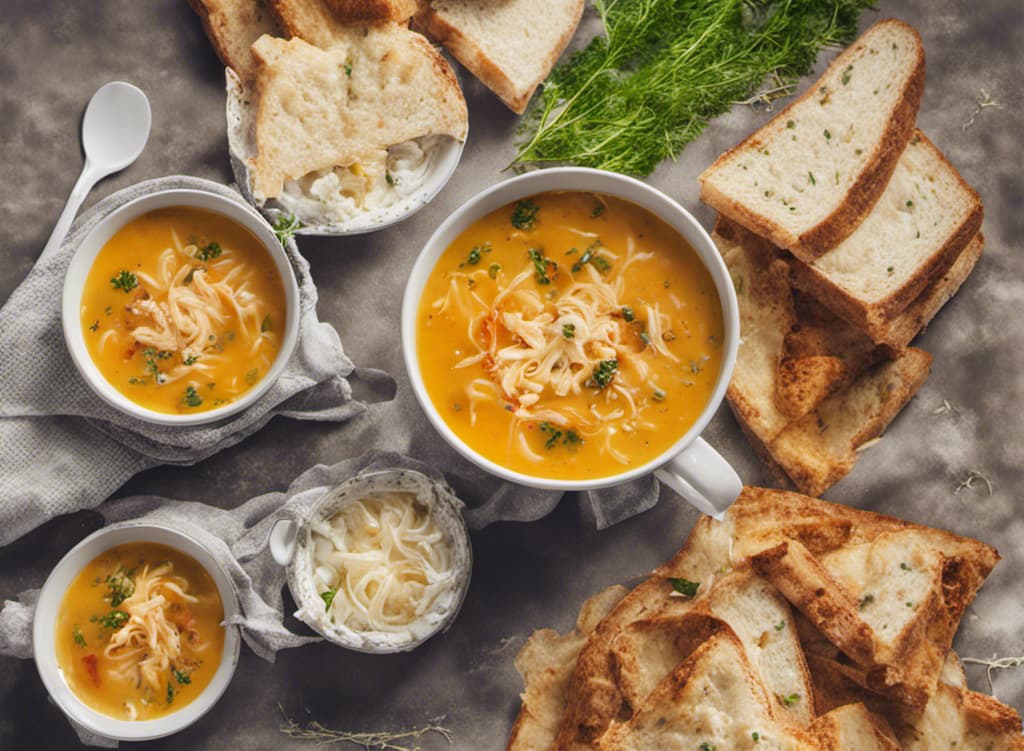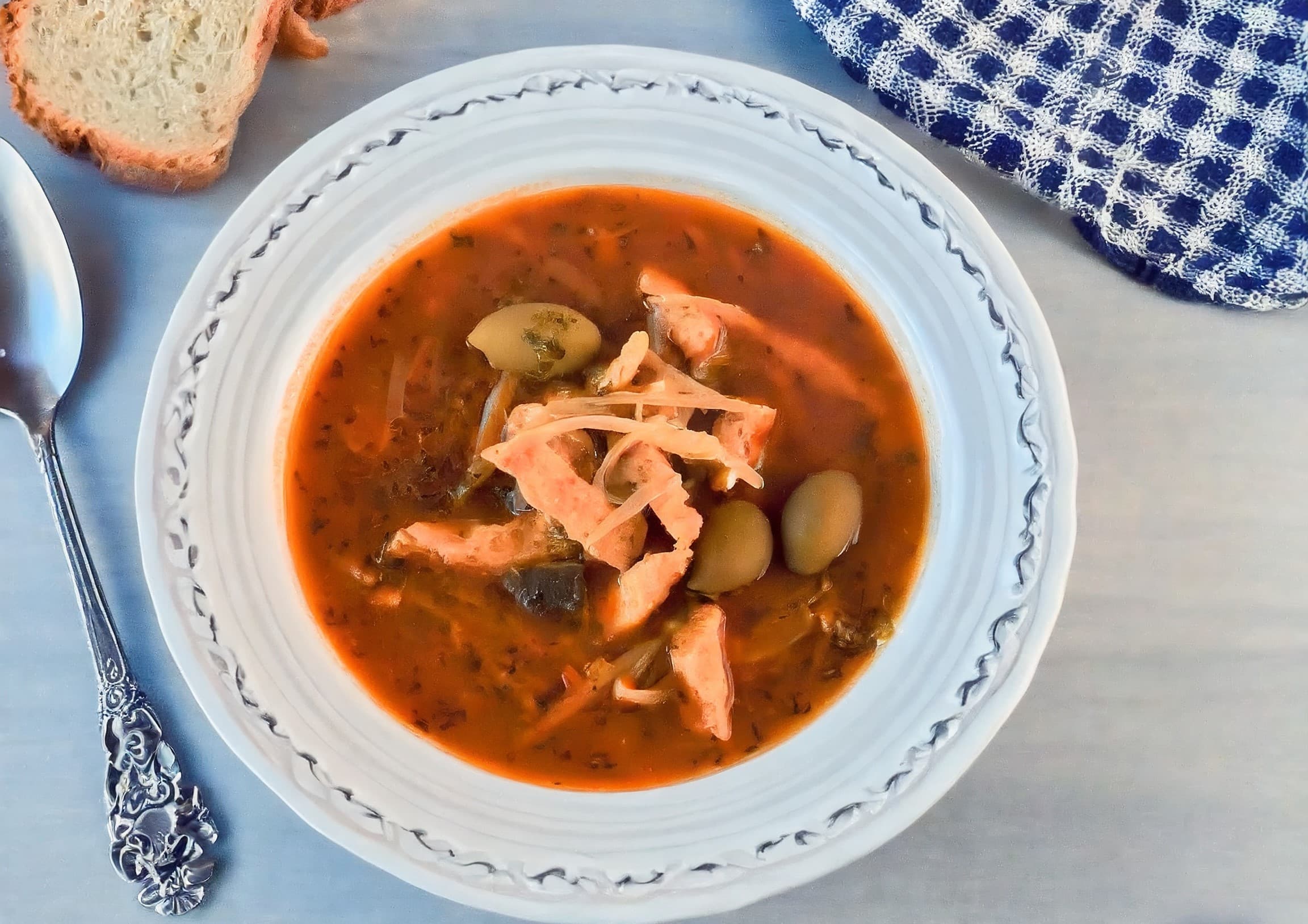A Culinary Adventure with Flaki
Explore the rich history & unique flavors of flaki, a hearty Polish soup made from beef innards. Discover the traditional flaki recipe & regional variations
Flaki, also known as flaczki, might raise eyebrows at first mention. The name translates to “guts,” a term that may not immediately entice every palate. However, for those with a taste for a robust, spicy tripe soup—a dish crafted from the innards of beef—this Polish classic offers a truly satisfying and comforting experience. Renowned for its purported hangover-curing properties, it graces wedding banquets and even boasts its own festival in the quaint town of Piaski, where enthusiasts gather to savor diverse interpretations crafted by regional culinary artisans.
- We also have a great article on Traditional Australian Food that you might like to check out

A Tradition Dating Back Centuries
Since the 14th century, tripe cooked in a hearty stock, thickened with roux, and infused with saffron, has adorned the tables of both royalty and commoners. Unlike many Polish dishes, flaki stands out with its bold spices, featuring notes of ginger, nutmeg, pepper, and marjoram. This meaty concoction yields spoonfuls of aromatic broth, beckoning for generous servings of crusty bread to mop up every last drop.
The Genesis of Flaki
Polish cuisine is synonymous with heartiness, and flaki embodies this tradition. While tripe soup isn’t exclusively Polish—similar rustic, flavorful broths can be found across Turkey, Ukraine, Belarus, Italy, Germany, and France—flaki has entrenched itself as a quintessential Polish dish, gracing menus far and wide.
Fit for Royalty
Władysław II Jagiełło, the 14th-century monarch of Poland, took pleasure in this savory delight. Though pre-packaged flaki can now be found lining store shelves, homemade renditions remain the pinnacle of culinary excellence. Crafting tripe soup is a meticulous endeavor, involving hours of simmering to tenderize the sometimes resilient beef stomach lining. Many opt for the delicate honeycomb variety. Various vegetables, from celery root to parsley root, carrots, leeks, and onions, find their way into the pot, always accompanied by an abundance of spices.
Crafting and Presenting the Perfect Flaki
Tripe soup takes on diverse forms across Poland, with distinct communities adding unique ingredients and twists. In Warsaw, succulent veal meatballs join the fray, while in the east, vibrant green peas lend their freshness to the mix. Some recipes incorporate a blend of butter-soaked, milk-soaked bread for thickness, while others rely on tomato paste for a rich, reddish hue—though this choice is not without its debates. For those adhering to a vegan lifestyle, a clever alternative has emerged, featuring oyster mushrooms as a substitute for tripe, seasoned to mirror the flavors of the meaty original.
A Symphony of Flavors
Many chefs prepare the soup in advance, allowing the ingredients to meld and intensify in aroma and taste. It’s a dish that can be reheated, but it should always be served piping hot, ideally accompanied by a glass of vodka and a hearty slice of crusty bread.
A final word about Flaki Recipe
Elevate your culinary repertoire with this traditional Polish flaki recipe, and savor the robust flavors of this unconventional spicy delight. flaki stands as a testament to the rich tapestry of Polish cuisine, offering a bold and flavorful experience for those willing to venture beyond the ordinary. Its centuries-old tradition, combined with the use of aromatic spices, makes it a beloved dish for many. Whether enjoyed at weddings, festivals, or intimate gatherings, flaki holds a special place in the hearts of Polish food enthusiasts. Embrace the adventure and savor the intricate flavors of this time-honored recipe in your own kitchen.
- We also have interesting and useful content like this article on our website that you will definitely be interested in viewing
Frequently Asked Questions about Flaki Recipe

- What is Flaki?
- Flaki, also known as flaczki, is a Polish tripe soup made from the innards of beef, known for its robust and spicy flavor.
- Is Flaki unique to Polish cuisine?
- While tripe soup is found in various countries, flaki has become a quintessential Polish dish, celebrated for its distinct flavors.
- What are the key spices used in Flaki?
- Flaki is seasoned with a blend of ginger, nutmeg, pepper, and marjoram, giving it a bold and aromatic profile.
- Can pre-made Flaki be found in stores?
- Yes, pre-packaged versions of flaki can be purchased, but homemade recipes continue to be highly prized for their authenticity and flavor.
- Why is honeycomb tripe preferred for Flaki?
- Honeycomb tripe, known for its tenderness, is often favored for flaki recipes due to its texture and flavor.
- What are some common vegetables added to Flaki?
- Celery root, parsley root, carrots, leeks, and onions are commonly included in flaki recipes for added depth of flavor.
- How is Flaki served in different regions of Poland?
- In Warsaw, flaki is served with veal meatballs, while in eastern communities, green peas are a popular addition.
- What are some variations of Flaki?
- Some recipes incorporate bread soaked in butter and milk for thickness, while others use tomato paste for a rich color.
- Is there a vegan alternative to Flaki?
- Yes, a vegan version of flaki has been created, using oyster mushrooms as a substitute for tripe, seasoned to replicate the original flavors.
- Can Flaki be prepared in advance?
- Yes, allowing the ingredients to meld over time enhances the aroma and flavor of the dish.
- What is the best way to reheat Flaki?
- Flaki can be reheated on the stove over low heat, ensuring it is served piping hot.
- What beverages pair well with Flaki?
- Flaki is often enjoyed with a glass of vodka, complemented by a slice of crusty bread.
- Are there any regional variations of Flaki?
- Yes, different communities in Poland may add unique ingredients or preparations to their flaki recipes.
- Can Flaki be frozen for later consumption?
- Yes, flaki can be frozen, but it’s recommended to reheat it slowly to maintain its flavors and texture.
- What are the cultural significance of Flaki in Poland?
- Flaki is often served at weddings and festivals, making it a cherished part of Polish culinary traditions.
- Can Flaki be adapted for dietary restrictions?
- Yes, with creative substitutions, Flaki can be tailored to accommodate various dietary preferences and restrictions.
- What are some creative ways to garnish Flaki?
- Fresh herbs, grated cheese, or a dollop of sour cream can add an extra layer of flavor and presentation to Flaki.
- What are the potential health benefits of consuming Flaki?
- Flaki is rich in protein and contains essential nutrients, making it a nourishing dish when enjoyed in moderation.
- How did Flaki become associated with hangover relief?
- The hearty and flavorful nature of Flaki has led to its reputation as a remedy for hangovers, providing comfort and sustenance.
- Is it possible to customize the spiciness of Flaki?
- Yes, the level of spiciness in Flaki can be adjusted by varying the quantities of spices used in the recipe.


